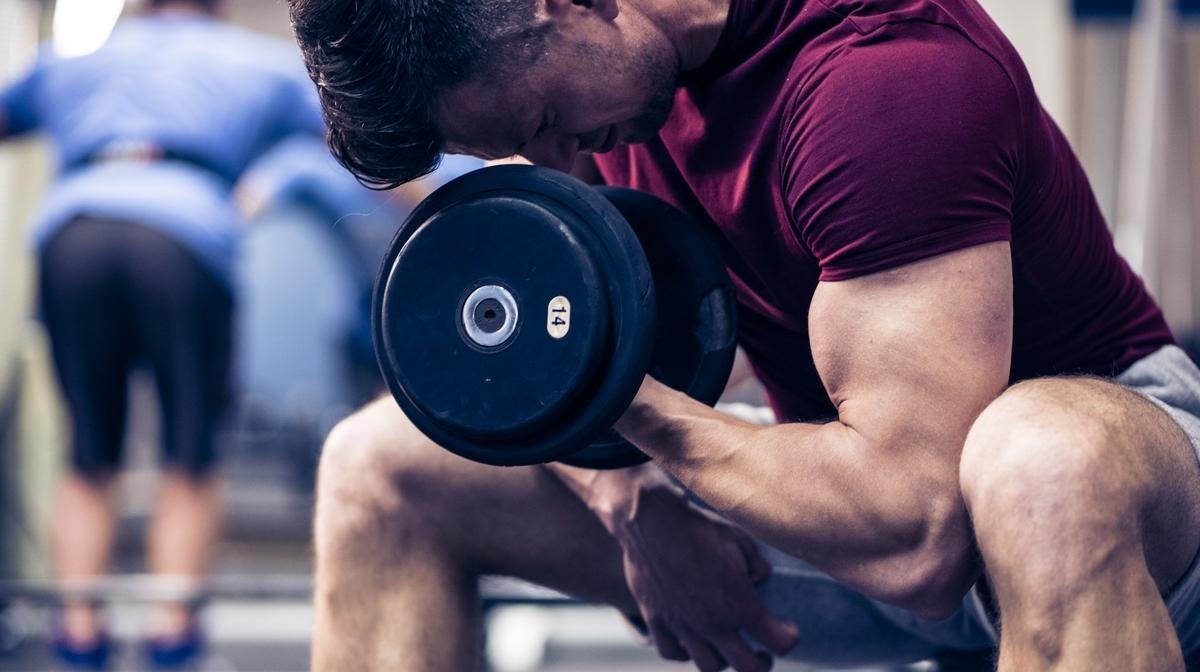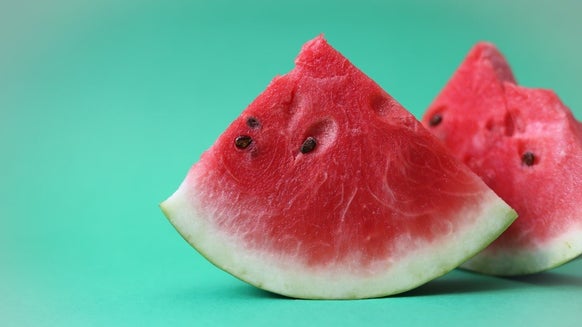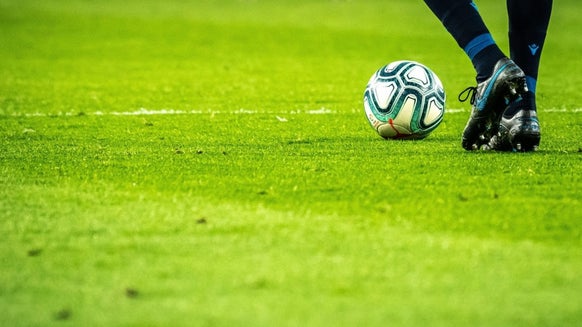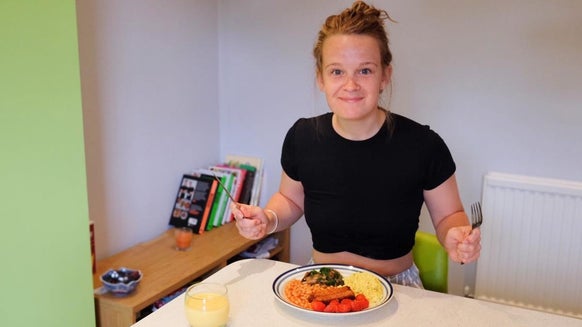Dumbbell Only Workouts | Our Comprehensive List

As with any form of exercise, the adaptations you are striving for are dictated by training volume, frequency, intensity, rest and nutrition. Dumbbells are a great way to introduce additional resistance training stimulus in order to facilitate you reaching your strength and fitness goals, including weight loss.
Dumbbell Shoulder Workout
1. Dumbbell Shoulder Press
Muscles Targeted: Deltoids, Triceps
Sets: 3
Reps: 8-12
Technique: Using an adjustable bench, start seated upright with the dumbbells resting at shoulder height with your palms facing forwards (ask a friend to assist you into this position if the dumbbells are too heavy to safely do so yourself). Brace your core before pressing the dumbbells straight up, locking your elbows out as the dumbbells meet at the top. Slowly lower to the starting position in a controlled manner before the next rep.
2. Lateral Raises
Muscles Targeted: Lateral Deltoid
Sets: 3-5
Reps: 8-15
3. Front Raise
Muscles Targeted: Anterior Deltoid, Biceps Brachii
Sets: 3-5
Reps: 8-15
4. Seal Rows
Muscles Targeted: Rotator Cuff Muscles, Latissimus Dorsi, Posterior Deltoid
Sets: 8-12
Reps: 3-4
Technique: Using an adjustable bench (or a fixed flat bench), lying inclined/prone, you should start with the dumbbells dangling from your arms (muscles still engaged though!). With your hands in a ‘neutral’ grip, pull your elbows up towards the ceiling, squeezing you shoulder blades together at the top of the movement before returning to the starting position.
5. Rear Delt Flyes
Muscles Targeted: Rotator Cuff Muscles, Rear Deltoid
Sets: 3-4
Reps: 8-15
Technique: Using a relatively light load so that you can optimise technique, start either bent at the hip so your torso is parallel to the ground, or with your torso supported by a bench. Start with your arms directly beneath your shoulder joint, then abduct your arms to the side until your hands are level with your shoulders. To adapt the difficulty of this exercise, perform the same movement but with a slight bend in your elbows. Slowly return the dumbbells to the starting position in a controlled manner before starting the next rep.
Dumbbell Arm Workout
1. Supinated Bicep Curl
Muscles Targeted: Biceps Brachii
Sets: 3-5
Reps: 8-12
Technique: Start seated or standing with the dumbbells held at your sides. With your palms facing forwards, flex at your elbows until you reach your end of the range of motion. Try to brace your core or support your torso so that you cannot swing (or ‘cheat curl’). To encourage preferential activation of the biceps, consciously supinate your hands throughout the lift (i.e. actively rotate your thumbs outwards whilst your palms are facing forwards). Slowly return to the start position before starting the next rep.
2. Hammer Curl
Muscles Targeted: Biceps, Forearms
Sets: 3-5
Reps: 8-12
3. Triceps Extension
Muscles Targeted: Triceps
Sets: 3-5
Reps: 8-12
Technique: Seated upright or standing, start by holding the dumbbell behind your head with your elbow up towards the ceiling. Extend and lock out your elbow, squeezing at the top, before lowering back to the start position in a controlled manner. (You can also perform this exercise supine/lying down, with your elbow towards the ceiling, lowering and extending the load past the side of your head. This will target the triceps at a different muscle length, thus adding some variety to training options).
Dumbbell Chest Workout
1. Dumbbell Flat Bench Press
Muscles Targeted: Pectoralis Major/Minor, Triceps, Anterior Deltoid
Sets: 3-4
Reps: 8-12
2. Dumbbell Incline Bench Press
Muscles Targeted: Pectoralis Major/Minor, Triceps, Anterior Deltoid, Middle Deltoid
Sets: 3-5
Reps: 8-12
3. Chest Flyes
Muscles Targeted: Pectoralis Major/Minor
Sets: 3-5
Reps: 8-15
Technique: Use a relatively light load for this exercise so that technique is not compromised and stress on the shoulder joint is minimised. Starting similar to the dumbbell bench press, lie on a supine bench and press the load up to the end of the range of motion to reach the starting position. Abduct your arms, following the natural arch of the shoulder, until your hands/the dumbbells are parallel with the shoulder joint. Proceed to adduct your shoulders by contracting your chest until you reach the starting position again.
Dumbbell Leg Workout
1. Bulgarian Split Squat
Muscles Targeted: Quadriceps, Glutes
Sets: 3-5
Reps: 8-12
Technique: Starting with the dumbbells held at your sides, get into a lunge stance with your back foot supported on a bench (the wider the stance, the easier it will be to maintain your balance). Keep your torso upright throughout the exercise, bracing your core to promote balance. Similar to a lunge, slowly lower your rear knee to the ground before contracting your quads and glutes to return to the start position. Squeeze at the top before lowering for the next rep, then repeat on the opposite leg.
2. Romanian Deadlift
Muscles Targeted: Hamstrings, Glutes, Lower Back Muscles
Sets: 3-5
Reps: 8-10
Technique: Starting with some heavier dumbbells held at your sides, bend at the hip, similar to a regular deadlift. Be sure to keep the dumbbells close to your legs throughout the movement. Contract your hamstrings to return to the start position once you feel a tolerable stretch in your hamstrings at the bottom of the movement. Squeeze your glutes at the top of the movement before initiating the next rep.
3. Box Step Ups
Muscles Targeted: Glutes, Quadriceps
Sets: 3-5
Reps: 10-15
Technique: Using a plyo-box between knee to mid-thigh height, start by holding the dumbbells at your side. Place your front foot onto the box, then push through that heel with minimal assistance from the leg on the ground. Use the back leg for support/balance when lowering yourself down on each rep. When at the top of the rep, squeeze your quads and glutes, before lowering yourself in a controlled manner prior to starting the next rep.
How heavy should your dumbbells be?
Beginners
Strength & Endurance
Build Muscle








